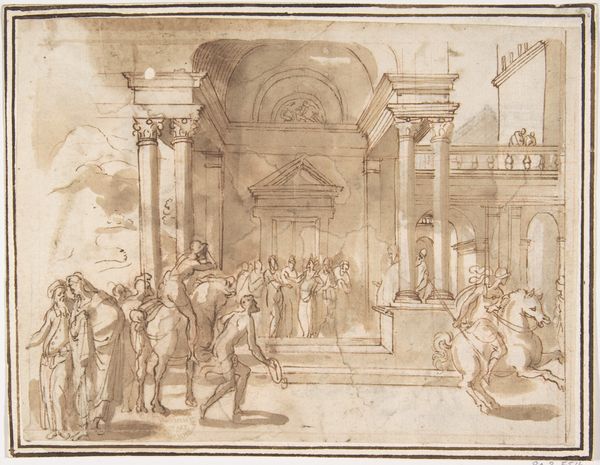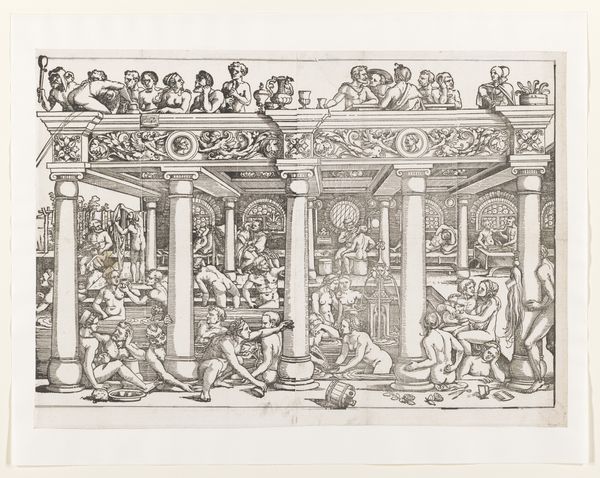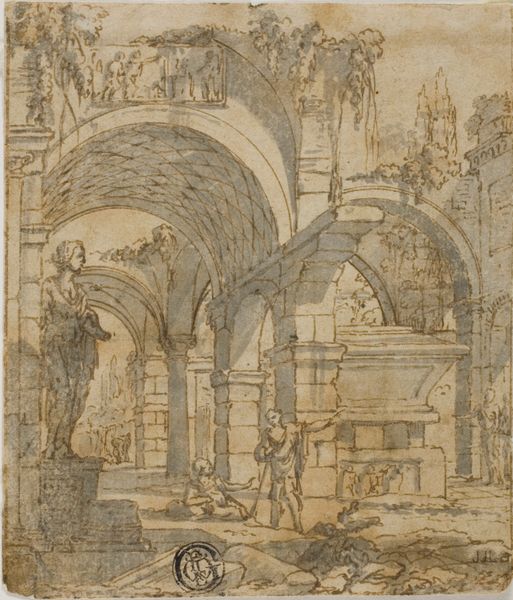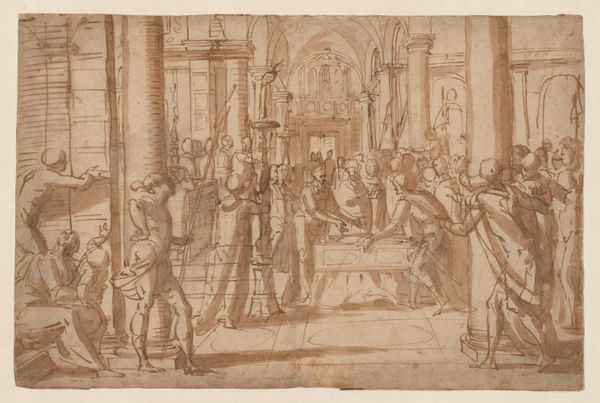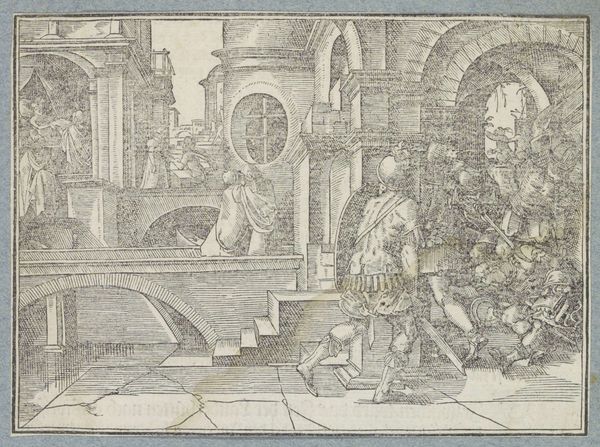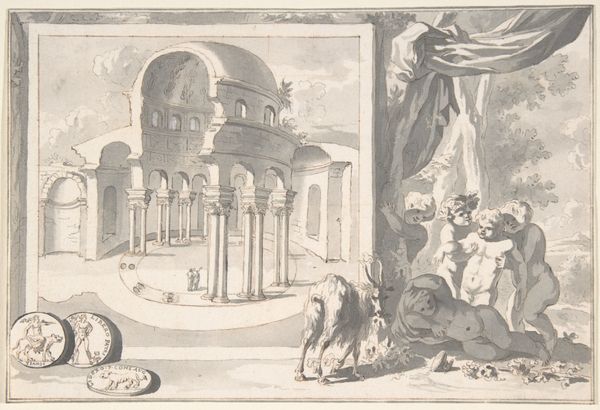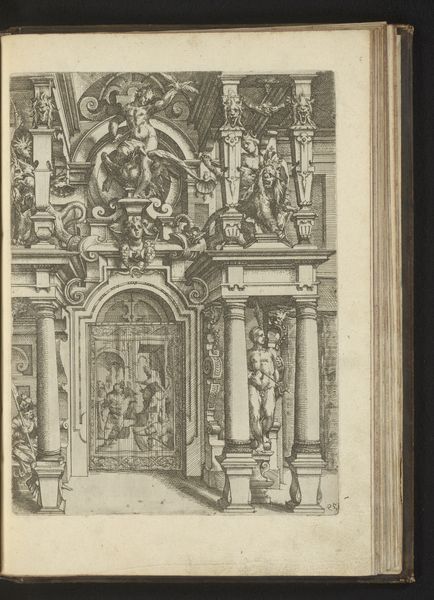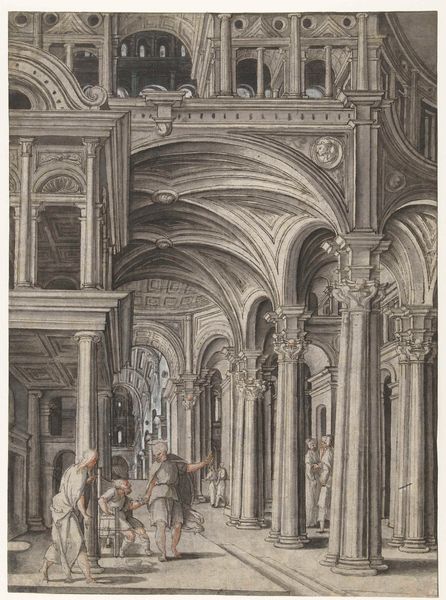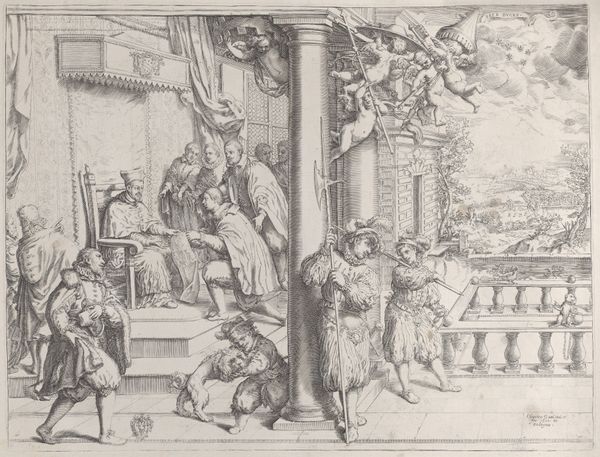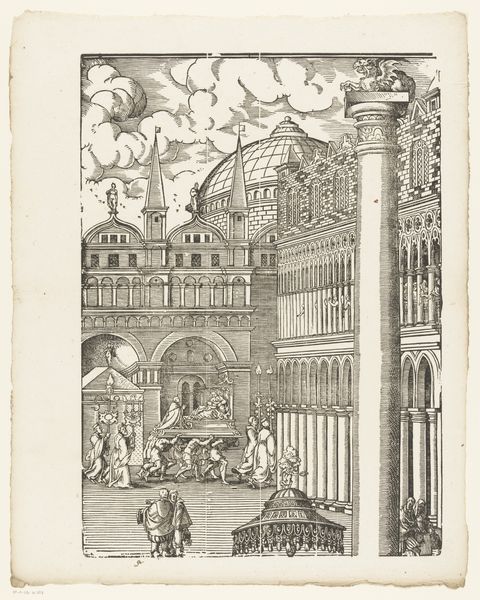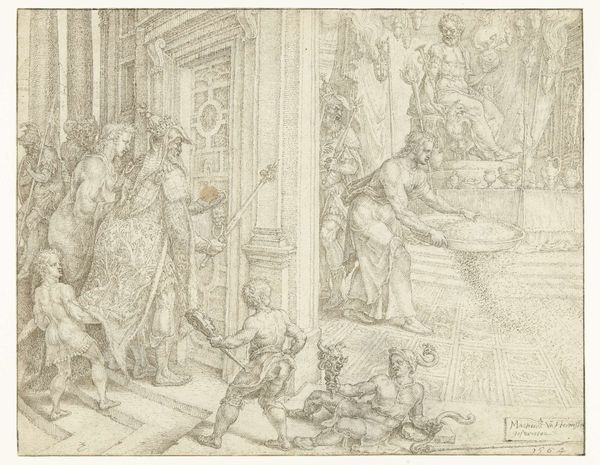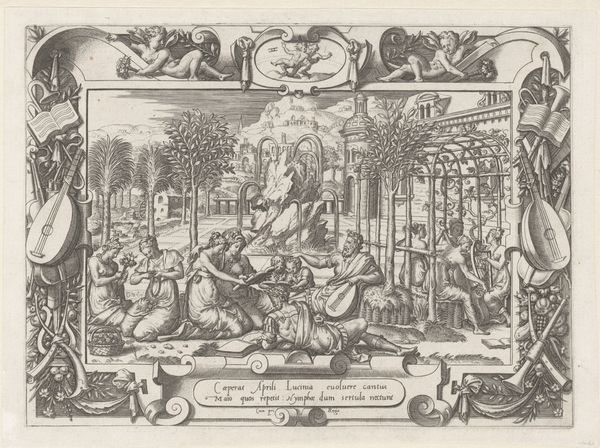
drawing, paper, ink, pencil
#
landscape illustration sketch
#
drawing
#
toned paper
#
light pencil work
#
mechanical pen drawing
#
pen sketch
#
pencil sketch
#
sketch book
#
perspective
#
figuration
#
paper
#
11_renaissance
#
personal sketchbook
#
ink
#
pen-ink sketch
#
pencil
#
line
#
cityscape
#
history-painting
#
storyboard and sketchbook work
#
northern-renaissance
Dimensions: height 272 mm, width 471 mm
Copyright: Rijks Museum: Open Domain
Hans Vredeman de Vries created this pen and brown ink drawing, “Esther and Ahasuerus,” with a distinctive architectural setting. In the foreground, we see Esther kneeling before Ahasuerus, a powerful scene marked by the king's reaction – a mixture of surprise and authority. Kneeling, a gesture of supplication, transcends cultures, yet here, it is charged with religious significance, echoing postures of prayer and humility before the divine. Consider the recurring motif of the ruler on high, receiving petitioners. This can be traced back to ancient Egyptian and Roman depictions of power. Esther's submissive posture and Ahasuerus' regal bearing are powerful psychological symbols. They evoke primal relationships of dominance and submission, resonating in our subconscious understanding of social hierarchies. This visual language of power, with its roots in antiquity, resurfaces continually, adapted and re-contextualized through history, reminding us that images possess a life of their own.
Comments
No comments
Be the first to comment and join the conversation on the ultimate creative platform.
